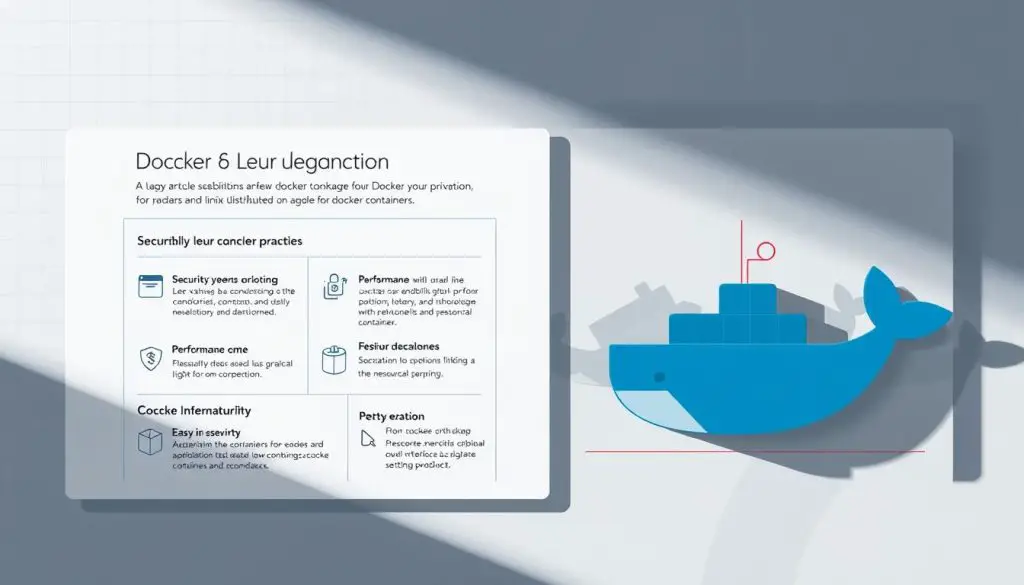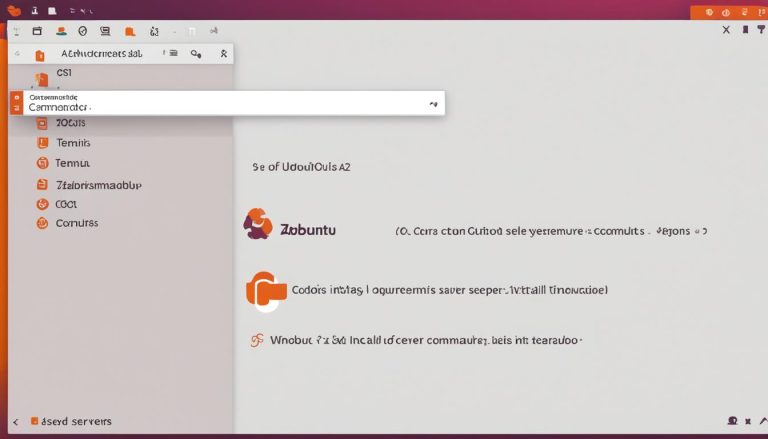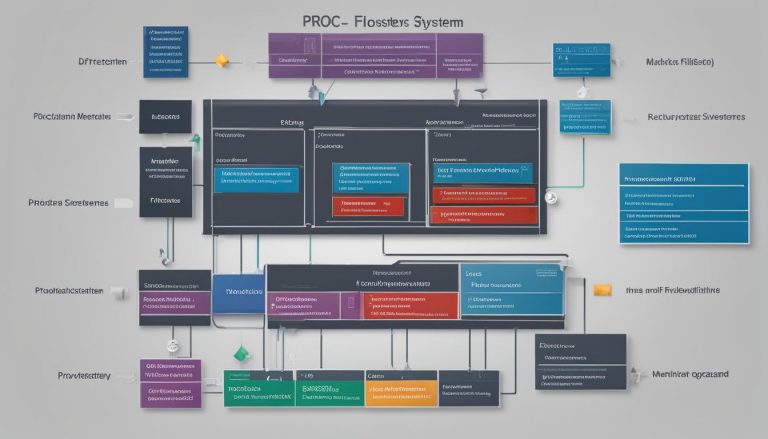Lightweight Linux Distro for Docker: Top Choices Explained
What if your container platform itself was weighing down your entire operation? Many teams invest heavily in optimizing their Docker workflows, yet overlook a critical component: the foundation. We’re examining specialized operating systems built from the ground up for containerized applications. These minimal environments strip away everything non-essential. This creates a lean, secure, and efficient host for your workloads. In this guide, we explore purpose-built systems like Alpine Linux, Fedora CoreOS, and RancherOS. Each offers unique advantages for production deployments. We’ll analyze their resource efficiency, security features, and maintenance requirements.
Choosing the right foundation is crucial in cloud-native architectures. Every megabyte of memory and storage impacts performance and cost. We break down the key criteria to help you make an informed decision.
Whether you’re a seasoned DevOps professional or new to containerization, this analysis provides valuable insights. We focus on practical benefits and real-world performance.
Key Takeaways
- Minimal operating systems optimize resource usage for container workloads
- Security is enhanced by reducing the attack surface area
- Specialized distributions often outperform general-purpose systems
- Consider factors like maintenance and orchestration compatibility
- Cloud deployments benefit significantly from efficient foundations
- Performance gains translate to real cost savings
- The right choice depends on your specific use case requirements
Introduction to Lightweight Linux Distros for Docker
Modern application infrastructure demands a fundamental shift in how we approach the underlying systems that host our containerized workloads. The container ecosystem has evolved to resemble the early days of Linux distributions, with Docker serving as the core element surrounded by competing components.
Background on Containerization and Minimalist OS
Containerization technology has revolutionized application deployment by packaging software with dependencies into isolated, portable units. These containers run consistently across different computing environments, eliminating compatibility issues.
The evolution of minimalist operating systems traces back from traditional full-featured linux distributions to purpose-built platforms. These specialized systems eliminate unnecessary components, creating optimized environments for container workloads.
Today’s container operating systems take different philosophical approaches. Some distributions focus functionality in proprietary management layers, while others support multiple ecosystem components. This flexibility helps administrators experiment and avoid vendor lock-in.
Purpose and Scope of this Roundup
We outline the purpose of this comprehensive analysis: to evaluate top linux distros optimized for running containers in production environments. Our examination focuses on resource efficiency, security features, and deployment suitability.
The scope specifically covers distributions designed as base images for creating containers or as host systems for running workloads. We consider factors like memory footprint, security hardening, and orchestration compatibility.
This framework helps technology professionals make informed decisions about their production environment resources. The right choice depends on specific use case requirements and operational constraints.
Key Benefits of a lightweight linux distro for docker
Adopting a purpose-built foundation for container workloads delivers tangible advantages across infrastructure operations. We examine the core benefits that make these optimized platforms worth considering.
Resource Efficiency and Reduced Overhead
Minimalist platforms excel at conserving system resources. They achieve remarkable efficiency by eliminating non-essential components that consume memory and processing power.
Consider the hardware requirements: some specialized platforms require under 10 MB in containerized form. A full installation might need only 130 MB of storage space. This compact footprint allows servers with modest specifications to host numerous container instances simultaneously.
The approach to resource use follows a strict necessity principle. Unnecessary programs and utilities are removed systematically. Only components essential for container operations remain active.
Enhanced Security and Simplified Maintenance
Security improves significantly with fewer active components. A reduced attack surface means fewer potential vulnerabilities require attention. This streamlined approach to system security minimizes exposure points.
Maintenance becomes more straightforward with fewer moving parts. The operating system requires less frequent updates and security patches. Administrators save considerable time on routine management tasks.
Essential services run efficiently without unnecessary overhead. This operational simplicity reduces troubleshooting complexity. The result is a more stable and reliable platform for production workloads.
Alpine Linux: Flagship Minimalist OS
When discussing specialized operating systems for container workloads, Alpine Linux consistently emerges as the leading choice. This platform stands out for its exceptional efficiency and security-focused architecture.
Core Features and Performance Metrics
Alpine Linux achieves remarkable compactness through its unique design. The system requires only 8 MB in container form and approximately 130 MB for minimal disk installation.
Its technical foundation combines musl libc with BusyBox utilities. This creates an incredibly small footprint while maintaining full functionality.
The apk package manager delivers exceptional speed for system updates. Administrators can upgrade third-party packages within 5-10 seconds.
Platform diversity represents another significant advantage. Installation media supports x86_64, ARM architectures, and various hypervisors.
Use Cases in Docker-Based Environments
Alpine Linux serves as the default base image for many official Docker repositories. Its minimal size makes it ideal for resource-constrained environments.
Organizations running multiple isolated container instances on low-end servers benefit greatly. The system operates efficiently with just 128 MB of RAM.
Teams seeking hardened production environments find Alpine’s security orientation valuable. The reduced attack surface enhances protection significantly.
Administrators should note the learning curve associated with OpenRC service management. However, the investment pays dividends in stability and performance.
For teams exploring various options, our comprehensive guide to the best linux distro comparisons provides additional context. Those implementing container management might also benefit from our how-to-install-portainer tutorial for streamlined operations.
Container-Optimized Alternatives: Fedora CoreOS, RancherOS, and Ubuntu Core
Exploring alternative container-optimized platforms reveals diverse strategies for efficient workload management. These three distributions take radically different approaches to solving container challenges.
Insights into Fedora CoreOS and Automated Updates
Fedora CoreOS represents a modern fusion of Container Linux and Project Atomic technologies. This platform features automated updates with multiple stability streams.
The system creates an immutable filesystem using Chromium OS-inspired partitioning. This enables safe rollbacks and continuous upgrades. CoreOS integrates Ignition with rpm-ostree for robust provisioning.
RancherOS Innovation and Its Evolution
RancherOS pioneered a radical approach where every process runs as a container. Even services like udev and syslog operate within containers.
This architecture eliminates traditional package management. The platform supports various orchestration tools despite being discontinued. Its 20MB footprint demonstrates remarkable efficiency.
Ubuntu Core for Embedded and IoT Deployments
Ubuntu Core specializes in embedded and IoT applications using snap containers. This technology supports multiple runtimes including Docker and Kubernetes.
The system offers OTA updates, secure boot, and full disk encryption. It’s continuously tested on leading IoT devices. For those implementing Ubuntu environments, our guide on installing and using Docker on Ubuntu provides practical deployment assistance.
Photon OS and Flatcar Container Linux: Cloud and Virtualization Ready
Virtualization-ready operating systems bring specialized advantages to modern infrastructure deployments. We examine two platforms designed for modern computing environments: VMware’s Photon OS and community-driven Flatcar Container Linux.
Photon OS for Cloud-Native and Virtualized Environments
VMware’s Photon OS represents a security-hardened platform optimized for cloud computing. It works seamlessly with major cloud providers including Amazon EC2 and Google Compute Engine. The system ships with Docker daemon pre-installed for immediate container support.
This operating system features a yum-compatible package manager called tdnf. The Photon management daemon (pmd) handles system updates and patches efficiently. Binaries are available as cloud images for various virtualization platforms.
Organizations can compare Photon OS with other solutions to understand its evolutionary approach to container management. It supports multiple orchestration frameworks while maintaining traditional management workflows.
Flatcar Container Linux for Scalable Container Management
Flatcar Container Linux takes a community-driven approach to container optimization. It ships a minimal OS image containing only essential tools for production workloads. The platform emphasizes security through its immutable filesystem architecture.
Automatic atomic updates ensure consistency across deployments. This design reduces maintenance complexity while scaling efficiently. The system runs on most virtualization platforms and major cloud providers.
Deployment flexibility includes bare metal installation via ISO images or PXE booting. This container host demonstrates how minimal systems can power large-scale applications effectively.
Key Considerations and Best Practices
Successful deployment of specialized operating systems hinges on understanding key operational considerations. We examine critical factors that influence platform selection and long-term maintenance strategies.

Installation, Package Management, and System Updates
Installation processes vary significantly across platforms. Alpine Linux features unique procedures with embedded system defaults, while CoreOS requires a two-step configuration file derivation process.
Package management approaches differ substantially. Alpine uses the apk package manager with incredibly fast upgrade capabilities. Photon OS employs tdnf, a yum-compatible system.
System update philosophies range from Fedora CoreOS’s automatic updates to Alpine’s fixed six-month release cycle. Each approach balances stability with current feature requirements.
Choosing the Right Distribution for Your Production Needs
Consider your team’s existing experience and learning curve tolerance. Alpine Linux with OpenRC requires time investment, while Photon OS offers a more evolutionary approach.
Evaluate long-term maintenance implications including update frequency and security patching processes. Consider version upgrade paths and support availability.
We recommend testing multiple platforms in non-production environments. This allows assessment of real-world performance and compatibility with existing infrastructure.
Conclusion
Container infrastructure decisions extend beyond orchestration to include the fundamental operating platform. We’ve explored how specialized systems provide significant advantages over general-purpose alternatives.
Alpine Linux serves as the foundational choice for many production environments. VMware Photon OS represents a comprehensive solution with enterprise-grade features.
Each platform addresses specific use cases. Resource-constrained deployments benefit from Alpine’s minimal footprint. Organizations with existing VMware experience will find Photon OS seamlessly integrated.
When evaluating container orchestration choices, consider how your operating system supports the overall architecture. The right combination ensures optimal performance.
We recommend testing multiple distributions in your environment before making a final decision. This approach helps identify the best fit for your specific requirements and infrastructure.
FAQ
What makes an operating system suitable for Docker containers?
How does Alpine Linux differ from other options?
Why is package management important in these systems?
Are these operating systems difficult to maintain?
Can I use these for production servers?
What about hardware compatibility?
How do updates work in these environments?
Is the experience similar to traditional Linux distros?
- About the Author
- Latest Posts
Mark is a senior content editor at Text-Center.com and has more than 20 years of experience with linux and windows operating systems. He also writes for Biteno.com






